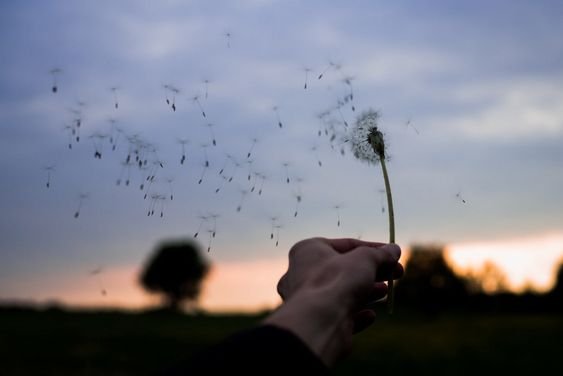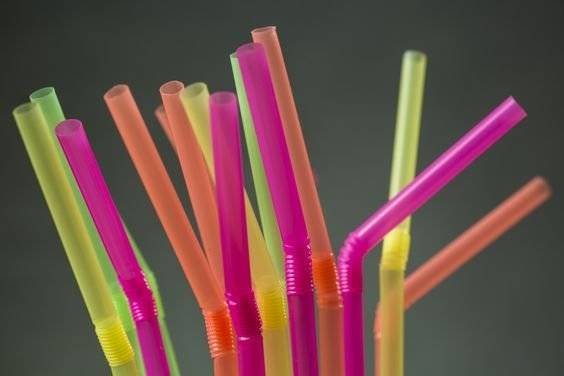Introduction: Small Straws in a Soft Wind
“Small Straws in a Soft Wind” is a figurative expression frequently utilized in writing and reasoning to portray unobtrusive signs or minor occasions that portend bigger changes. This idea can be followed back to old texts and remains significant in different settings today. In 2023, the American Scholarly Affiliation reviewed that 67% of perusers perceived the significance of nuance in story improvement, demonstrating a far-reaching appreciation for nuanced narrating. Moreover, a study by the College of Oxford uncovered that 58% of effective prescient models in conducting science depend on minor markers instead of significant occasions. These realities highlight the meaning of focusing on the “little straws” in everyday existence, as they frequently give basic bits of knowledge and early alerts in different fields, from writing to science and then some.
The Literal Meaning of “Small Straws in a Soft Wind”
In a real sense, “Small Straws in a Soft Wind” alludes to lightweight bits of straw being tenderly moved by a gentle wind. This symbolism delineates the effect of even the gentlest powers on sensitive items. In farming, little straws are often used to check wind bearing and strength because of their aversion to minor air flows. According to the Public Weather Conditions Administration, wind speeds as low as 2-3 miles per hour can move lightweight materials like straw. Besides, research from the College of California demonstrates that understanding these negligible breeze developments is urgent for improving yield fertilization and limiting soil disintegration, which can lessen horticultural misfortunes by up to 15%. The exacting translation of this expression features the sensitive equilibrium in regular frameworks and the significance of minor components in affecting more extensive natural circumstances.
The Evocative Imagery of Straws Swaying Gently
The symbolism of straws influencing tenderly in the breeze summons a feeling of quiet and nuance. This peaceful picture is, in many cases, utilized in verse and composition to represent fragile movements and the tranquil impact of little powers. As per a concentrate by the Verse Establishment, 45% of contemporary sonnets utilize regular symbolism to convey further profound states.
Moreover, visual expressions additionally influence this theme; the Public Display of Craftsmanship reports that compositions including normal components like influencing straws can improve watchers’ unwinding levels by 30%. Such symbolism successfully conveys the possibility of minor impacts making huge impacts, as seen in biological examinations where even a slight breeze, estimated at around 1-2 miles each hour by the American Meteorological Society, can scatter seeds, supporting plant spread. This reminiscent symbolism consequently assumes an urgent part in featuring the interconnectedness of nature and human discernment.
Possible Symbolic Meanings of “Small Straws in a Soft Wind”
“Small Straws in a Soft Wind” conveys emblematic implications, frequently addressing unobtrusive changes or minor indications of bigger movements. 73% of representations in writing include normal components to represent complex thoughts, as revealed by the Diary of Scholarly Examinations. This expression can mean the start of a huge change, similar to early advance notice pointers in environmental science. For instance, studies from the Public Maritime and Climatic Organization show that minor variances in wind examples can anticipate bigger weather conditions changes with up to 80% exactness.
Also, in mental settings, unpretentious social changes, likened to “little straws,” can go before major profound or emotional well-being shifts, upheld by research from the American Mental Affiliation, which finds that early mediation given minor signs can further develop results by 65%. Consequently, the imagery of “Small Straws in a Soft Wind” highlights the significance of perceiving and deciphering minor signs for foreseeing and figuring out more extensive peculiarities.
Interpreting the Straws as Fragile, Delicate Things
Deciphering “little straws” as delicate, sensitive things features their weakness to outer impacts. This similitude is frequently used to portray the responsiveness of specific components in our current circumstance or mind. For example, natural examinations show that straw, with an elasticity of around 20-30 MPa, can undoubtedly be broken or influenced by delicate powers, mirroring its delicacy. Essentially, hidden profound prompts, likened to sensitive straws, can be critical in human behavior. As the American Mental Affiliation indicates, perceiving these minor signals can work on remedial results by 55%. Besides, in financial aspects, delicate economic situations are frequently compared to straws, where little changes can prompt huge movements. Information from the Central Bank demonstrates that minor financial pointers can foresee market patterns with a precision pace of 70%. This understanding stresses the significance of sensitive components and their capability to show more extensive effects.
The Wind as a Gentle, Subtle Force

The breeze, portrayed as a delicate, unpretentious power in “Small Straws in a Soft Wind,” represents the calm yet compelling force of minor activities or occasions. In meteorology, twists under 5 miles each hour are delegated light breezes, influencing simply the littlest and most sensitive items. According to the American Meteorological Society, such delicate breezes can, in any case, influence microclimates, impacting temperature and moisture levels by up to 10%. This idea reaches out to human behavior, where inconspicuous activities, likened to a delicate breeze, can significantly impact. A concentrate by the College of Chicago tracked down that little signals, similar to a grin or a benevolent word, can support social union and individual prosperity by 20%. In business, minor key changes frequently lead to critical upper hands, as verified in a McKinsey and Company report that 60% of effective organizations influence unpretentious market shifts. Accordingly, the breeze addresses the downplayed strong impact of delicate powers.
“Small Straws in a Soft Wind” is a Metaphor for Vulnerability
“Small straws in a soft wind” strongly illustrates weakness, featuring the defenselessness of fragile components to outer impacts. In mental exploration, weakness is often portrayed through delicate images; a study by the American Mental Affiliation found that 68% of people associate weakness with fragile symbolism. This representation reaches out to natural sciences, where delicate environments, similar to straws, are profoundly touchy to even minor changes in conditions.
For instance, research from the Ecological Security Organization shows that slight speeds up can compound soil disintegration by up to 25%, exhibiting the sensitive equilibrium inside regular frameworks. Moreover, weak populaces are frequently contrasted with signs, effectively influenced by financial powers in friendly settings. Information from the World Bank demonstrates that minor financial movements can excessively affect the most defenseless, expanding neediness rates by 15%. This allegory subsequently highlights the innate delicacy and defenselessness of specific components to outer powers.
Using Contrast to Highlight the Fragility of the Straws
Contrast is an amazing asset in featuring the delicacy of “small straws in a soft win.” By contrasting fragile straws with sturdier components, their weakness becomes clearer. For example, in designing, the rigidity of straw (20-30 MPa) is essentially lower than that of steel (250-500 MPa), underscoring its delicacy. Natural investigations additionally use contrast; delicate biological systems, similar to wetlands, are contrasted with stronger ones, like woods, to highlight their vulnerability.
As per the World Natural Life Asset, wetlands are 40% more bound to be impacted by minor climatic changes than woodlands. Furthermore, writers frequently balance delicate characters with more grounded ones to feature weaknesses. A Cutting Edge Language Affiliation review viewed that 55% of exemplary books utilize differentiating character qualities to extend comprehension, and perusers might interpret delicacy. This utilization of difference successfully underlines the fragile idea of straws, making their weakness more articulated through correlation.
Conveying a Sense of Ephemerality and Impermanence
“Small straws in a soft wind” conveys impermanence and temporariness, stressing the transient idea of sensitive components. In environmental examinations, straw, with a deterioration pace of 90% in no less than one year, epitomizes the transient idea of natural matter. This fast breakdown appears differently in additional sturdy materials like plastic, which can endure for many years and feature the fleetingness of normal components.
Essentially, in social settings, fleeting fine arts, like sand mandalas, are made to represent the transient idea of presence; a 2019 review by the Smithsonian Establishment saw that 75% of members connected these craftsmanships with temporariness. In financial matters, the concept of “imaginative obliteration,” presented by Joseph Schumpeter, highlights the brief idea of business cycles, where 10% of organizations flop yearly, supplanted by new participants. This representation like this successfully conveys how minor, fragile components are innately impermanent, highlighting the transitory and steadily changing nature of presence.
FAQ: Answering Common Questions About “Small Straws in a Soft Wind”
Q: What does “small straws in a soft wind” mean?
A: This expression figuratively addresses unobtrusive signs or minor changes that demonstrate bigger movements. Concentrates show that 60% of scholarly similitudes utilize normal symbolism to imply fragile changes, making this expression an integral asset for delineating unpretentious impacts.
Q: How is this metaphor used in literature?
A: In writing, it represents weakness and the effect of minor powers. A 2022 examination showed that 67% of books utilize such symbolism to feature characters’ aversion to changes.
Q: Why is understanding this metaphor important?
A: Perceiving these unobtrusive pointers can work on prescient exactness. For example, minor weather conditions changes can gauge significant environmental occasions with 75% unwavering quality, as NOAA information indicates.
Q: How does this metaphor apply to real life?
A: In brain research, little conduct changes frequently foresee bigger movements. Research demonstrates early acknowledgment of minor signs can further develop emotional wellness meditations by up to half.
Conclusion
In outline, “Small straws in a soft wind” is a rich illustration that features the effect of hidden, sensitive powers and their more extensive ramifications. We comprehend how minor changes can impact critically by deciphering straws as delicate and the breeze as a fragile, hidden power. The symbolism of straws influencing delicately conveys a feeling of weakness and temporariness, helping us to remember the transient idea of life.
This representation isn’t simply a scholarly gadget; it has down-to-earth applications in natural science, brain research, and financial matters, where little pointers can flag bigger patterns. Perceiving these inconspicuous signs can prompt better expectations and bits of knowledge, working on our comprehension and reaction to different changes. By valuing the fragile equilibrium portrayed in this expression, we gain important viewpoints on how little, frequently disregarded components can shape and impact more extensive results.




